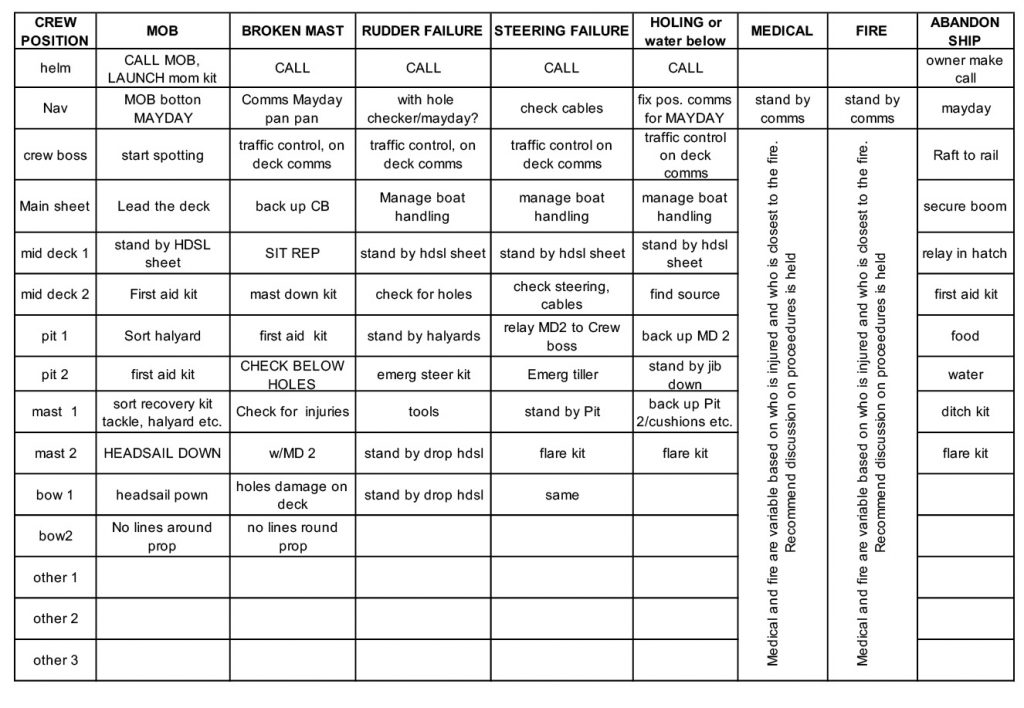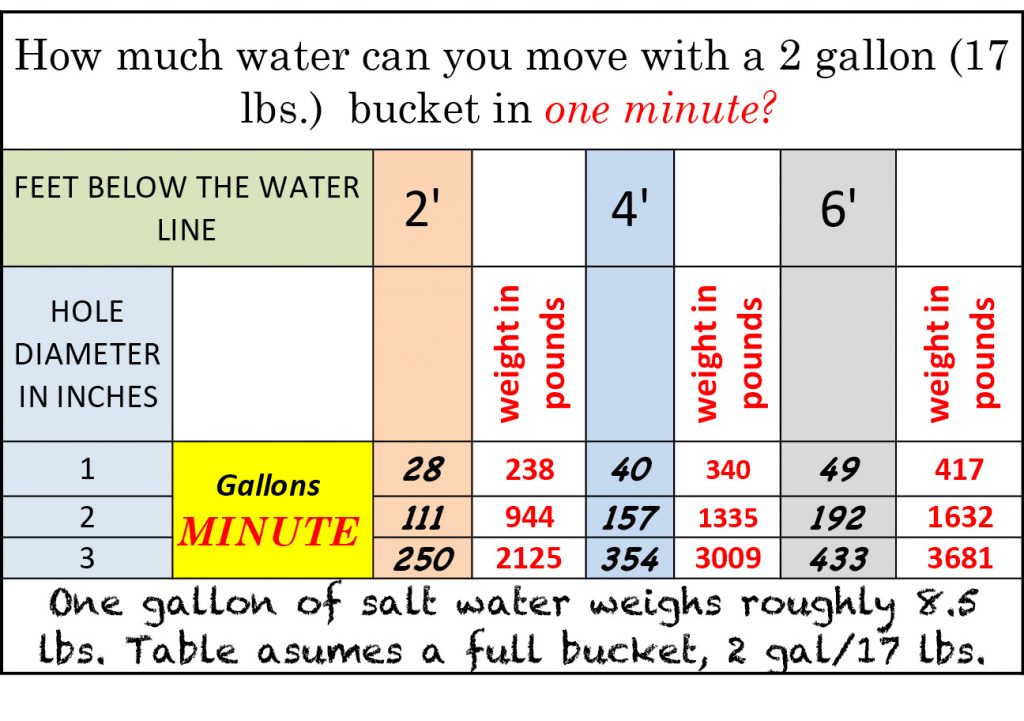I usually spend a lot of time (most, my wife Jill would say) thinking about sailing. Of late I have been thinking about sailing even more. Life lessons, funny stories, dumb moves and everything in between. As I tell my high school sailors, give me a sentence and I can give you a sailing story.
In the November/December 2017 Coop’s Corner (“Figure It Eight”; windcheckmagazine.com/article/figure_it_eight/), Randall Reeves, who would soon become the first person to complete a solo, non-stop circumnavigation of the Americas and Antarctica in a single year (randallreeves.live), remarked, “sailing, at sea, is like being on another planet. Everything is in a small capsule, everything you will ever need is in the capsule, and you must be able to respond to anything and everything that happens, even the things you have not planned for.” Now, the fatality rate in sailing is extremely low and for the most part this is because of training and planning. I was thinking of this the other day when it was blowing the oysters off their collars.
There are The Eight Things (see “The Eight Events” chart) that can happen to, or aboard a boat at sea or cruising up the coast. They are in no particular order: Broken mast, MOB, holing, fire, broken steering, broken rudder (two different problems) medical emergency, and abandon ship.
It is this latter event I have been thinking about while hove-to at home. Abandon ship generally comes on pretty quickly. Perhaps a few minutes, to, if you’re really lucky, 30 or 40 minutes. It comes as a massive psychological shock; it takes us way out of our comfort zone, the fear meter hits the stops, and by and large it is something that cannot really be practiced, at least fully.
The Safety-at-Sea seminars have a session in which you jump into a pool and climb into a liferaft. This is a worthwhile exercise, but I think merely the very thinnest end of the process: the mechanics of scrambling into a raft. In a flat calm, 80-degree swimming pool, with 10 to 20 people milling around. I have conducted such a session a couple of years ago and I learned a lot myself. Granted, some (maybe most or all) of my ‘findings’ revolve around the fact it is an exercise done not remotely in anger. I noticed two critical aspects that need more attention: Planning and Leadership. But let me first set the stage.
The scene is the pool house at Roger Williams University in Bristol, RI. Dan O’Connor, a longtime Safety-at Sea seminar supporter and presenter (particularly with liferafts) has arrived earlier with ten rafts. I have the first class standing in their slickers and inflatable jackets waiting for it all to begin. I address them with a scenario that goes something like this:
“Please take a moment and picture yourselves in a contemporary 50-foot boat, sailing to the UK. You are about halfway across, in the middle of nowhere. You are beam reaching. It is blowing hard but not impossibly so, 30 knots steady with gusts to high 30s. The sea is moderate, eight to ten feet so the boat is wet, but not VOR/IMOCA-at-speed wet. The conditions are those that might be encountered in any Hobart, Bermuda or Fastnet Race, or fall delivery to the Caribbean. The time is 0200 and you have just come off watch, peeled off your slickers, slurped some soup and slithered into a warm berth. You are enjoying yourself on this trip: good mates, a good boat sailing well, life is good. You start to doze off listening to the rush of water just inches away from your ears.” I pause.
Who of you, dear readers, has not had such a sensation inside their own capsule? Even if not in the middle of the Atlantic, it is one of the great satisfactions we get from sailing.
I watch my group, eight or nine souls usually, a mix: men and women, old and young, fit and woefully not. I ask if they all have this picture in their mind? A couple of tepid nods, or no response at all. I think to myself, “They are wondering where this is going…” I let this stew for an amount of time that seems right, ten seconds maybe, then clap my hands together and shout (as loud as seems civil), “BANG!”
I say, “You jerk awake. You are several inches further forward in your bunk. You hear voices on deck, cussing and cries of ‘You OK?’ The boat is upright, sails flogging, and someone comes storming down the companionway and starts pulling up the floorboards. More cussing. She calls up to the deck, ‘We are getting water in the bilge. Lots of water.’ She drops the floorboard and heads to the fore cabin. Repeats, turns around and looks aft, somewhat frozen. There are shouts on deck. You hear snippets: log, hole, EPIRB, pumps. Now wide awake, you scramble out of the berth into shin-deep water. Your brain is not in panic, but it is certainly looking for its panic button.”
I close this pantomime out with, “Yes, you hit something, the boat is holed, and the crew’s collective actions will determine if you arrive back at Logan from Hamburg alive, or maybe are never seen again. You have 90 seconds to stay alive or die.” I pause. “What do you do?” Unfortunately, a lot of blank faces most of the time.
Now I grant you, a true scenario of this type is likely to go a lot better with some of the following addressed.
• Crew members who actually know each other and might have already sailed together a lot, not a group of mostly strangers.
• A master who has been thinking on this subject, ever mindful of the implications of taking five fellow humans to sea.
• A master who has read, studied and considered the conditions of the capsule and the various lists of contents intended to combat any situation, particularly one like this.
• A master and crew who have developed a plan, discussed the various (eight) scenarios and knows who will do what in each scenario, and
so on.
• Cohesive planning, practice and purpose
THE EIGHT EVENTS

I ask the group, “What is the first thing you need to do, NOW?” (voice elevated for effect). Of the five or six groups I worked with that day, remarkably few people would respond, in any way. I encourage them with something like, “Seventy-five seconds left.” A hand goes up. “Get the raft?” I nod. Activate the EPIRB?” I nod again. “Send a MAYDAY?” Nod. “Make a plan?”
I ask, “How big is the hole? What can be used to slow the inflow? (See the “How much water can you move?” chart.) What are the needed tasks? Who is doing what task? Organizing the raft? The EPIRB? The MAYDAY on Channel 16 and the DSC red button? Who’s getting the ditch kit, the extra no-cook food (granola bars), the extra water and the boat’s flares and related gear (not those in the raft)? Who is in charge? Who’s in charge if that person is injured? Who is to make the call to abandon ship? If not the owner, the person making that call has a huge responsibility suddenly thrust on them. Is the ship really sinking? Who has checked, in the last fifteen seconds, the woman in the bow? I come back to the ‘make a plan’ woman. “What is your plan?” I ask, adding, “Forty-five seconds left.”
The point being made, I hope, I wind down Act One. I ask, “Who can make a plan for all of this in now thirty seconds? No answer. “There is a reason why the elite sailing programs spend lots of time training,” I say. I ask, “What might be a better time to make a plan?” “Before you leave,” my girl answers. Getting somewhere. “Tonight when you get home from this seminar,” I suggest.

We progress to the actual in the water raft part. I have someone heave the raft into the pool and pull the activation cord, and then me being the evil bugger I am I ask, “Who is getting into the raft first?”
This question was answered for me a few years ago. I was doing a Storm Trysail Foundation Junior Safety-at-Sea Seminar in Newport and we got to “Who gets in first?” The students were high school age, except for one young fellow who was perhaps ten at the time. Why he was there is not germane to this tale, but his response confirmed that my decision to let him attend was right. After a few seconds of no answer from the teenagers, this small, quiet, bespeckled Padawan raised his hand and when called upon responded, “The biggest person.” When the ever present Dan O’Connor asked, “Why?” he said – and get this – “Well, the biggest person will sink the raft the most and being big they can help the smaller people get in easier.”
Undertaking such passage may well be the highlight of many a sailor’s life. Sailing is hugely safe activity mainly due to these seminars…and planning. It’s all in the planning. Speaking of which, I have exceeded [Editor-in-Chief] Zep’s word count. [No worries, mate. – Ed.]
More next month. Wash yer hands. ■
Australian born, Joe ‘Coop’ Cooper stayed in the U.S. after the 1980 America’s Cup where he was the boat captain and sailed as Grinder/Sewer-man on Australia. His whole career has focused on sailing, especially the short-handed aspects of it. He lives in Middletown, RI where he coaches, consults and writes on his blog, joecoopersailing.com, when not paying attention to his wife, dog and several, mainly small, boats.




